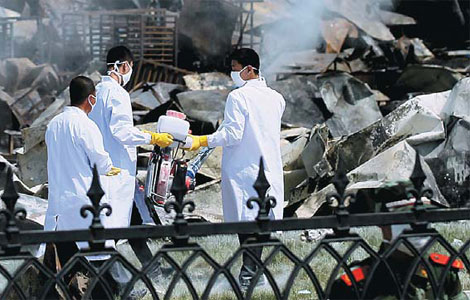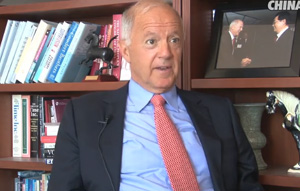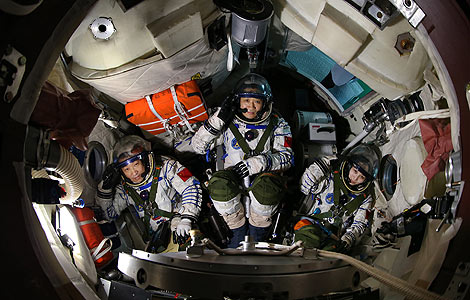WHO updates pandemic influenza guidance
Updated: 2013-06-11 13:49
(Xinhua)
|
|||||||||||
GENEVA - Amid human infections from H7N9 and MERS-CoV, the World Health Organization (WHO) on Monday released an updated guidance to help coordinate national and international pandemic preparedness and response.
The "Pandemic Influenza Risk Management: WHO Interim Guidance," incorporating lessons learned from the Influenza A (H1N1) 2009 pandemic and other relevant developments, replaces the "2009 Pandemic Influenza Preparedness and Response: a WHO Guidance Document."
Following recommendations by a review committee on Pandemic (H1N1) 2009, the new influenza guidance simplifies the pandemic phases structure, emphasizes the risk assessment and risk-based approach, and increases the flexibility of member states to take actions.
"What we have in the new guidance is a new approach to phases, we have a new approach to severity, and we try to emphasize this risk-based approach and to increase the flexibility for member countries," WHO Special Adviser David Harper told a press conference.
As for the differences from previous editions, the 2013 guidance applies the principles of all-hazards emergency risk management for health to pandemic influenza risk management, aligning more closely with the disaster risk management structures already in place in many countries.
It also highlights the need for appropriate and timely risk assessment for evidence-based decision-making at national, sub-national and local levels, the WHO underscored.
Another new trait of the latest guidance is the risk-based approach to pandemic influenza risk management, which also encourages member states to develop flexible plans based on national risk assessment while taking account of the WHO's global risk assessment.
The updated document also incorporates the Pandemic Influenza Preparedness Framework (PIP Framework), which places great emphasis on virus sharing, benefit sharing and governance and review, said the WHO.
Another significant change in the new guidance is seen in the global phases setting, which falls into four - interpandemic, alert, pandemic and transition - from the previous six phases.
Harper took the current occurrence of H7N9 and MERS-CoV as examples, saying that the two are at the alert phase, where influenza caused by a new subtype has been identified in humans, as the definition goes.
The revision also strengthens the measurement of pandemic severity, underlining its essential role in overall pandemic risk assessment.
The guidance lists three indicators, namely transmissibility, seriousness of disease and impact on health care sector, and points out that severity assessments should be conducted at the community, national and global levels, with each of these assessments enabling refinement of risk assessments at the other levels.
The interim guidance, released after a peer review in April 2013, is now expecting comments from member states, and the finalized edition is to be published later this year, Harper said.
Related Stories
Scientists reveal H7N9 clinical findings 2013-05-29 00:34
Flu outbreak kills one in S China 2013-05-10 15:16
China reports three new H7N9 cases 2013-04-26 10:12
China confirms 108 H7N9 cases, 22 deaths 2013-04-24 09:32
2 H7N9 patients discharged from hospitals 2013-04-19 21:16
Today's Top News
Apple unveils new mobile software platform
Obama names Furman as new chief economist
Mandela hospitalized over 60 hours
Small cities play growing role in film market
China to launch Shenzhou-X today
Organ transplants - to donate or not
Better Sino-US ties benefit world
China to strengthen cooperation with GMS
Hot Topics
Lunar probe , China growth forecasts, Emission rules get tougher, China seen through 'colored lens', International board,
Editor's Picks

|

|

|

|

|

|





